Top 6 DevX Tools Every Kubernetes Developer Should Know
If you’ve ever chased bugs in a broken staging environment, wrestled with setups that never match production, or been blocked by an unpredictable API, you’ve run into developer experience (DevX) problems. Debugging often requires full redeployments. API tests fail because someone changed a schema. Infrastructure knowledge lives in Slack threads or someone’s terminal history.
These kinds of friction don’t always feel urgent, but they quietly erode momentum. You stay busy without making progress.
This list is a response to that. These are six tools that we’ve used personally or with teams, all of which have consistently helped us ship faster, debug smarter, and avoid the repetitive traps that slow modern development. While plenty of great tools exist, these six continue to prove themselves.
What you will learn:
- How to debug cloud-reliant apps without deploying every time.
- How to improve team collaboration without stepping on each other’s toes.
- How to set up reliable, repeatable environments with less overhead.
Quick-reference table
We’ve grouped these six tools into three practical categories. If you’re just here to find a tool that solves a specific problem, the summary table below makes it easy to jump straight to what you need:
| Category | Tool | What it helps you achieve |
|---|---|---|
| Production-like local workflows | mirrord | Build and test locally with real infrastructure context, without waiting on staging. |
| Tilt | Automate rebuild, deploy, and sync cycles for faster Kubernetes development. | |
| Collaboration | vCluster | Create isolated virtual K8s clusters for team environments without resource conflicts. |
| Devcontainers | Standardize development environments across teams with containerized toolchains. | |
| Environment setup and config | Crossplane | Provision cloud resources consistently across providers with Kubernetes-native IaC. |
| KubeVela | Define applications and delivery workflows once, deploy anywhere with platform-agnostic patterns. |
Best DevX Tools for Collaboration
The most significant delays often come from misalignment, not bad code. These tools help teams stay in sync across APIs, environments, and time zones.
1. vCluster
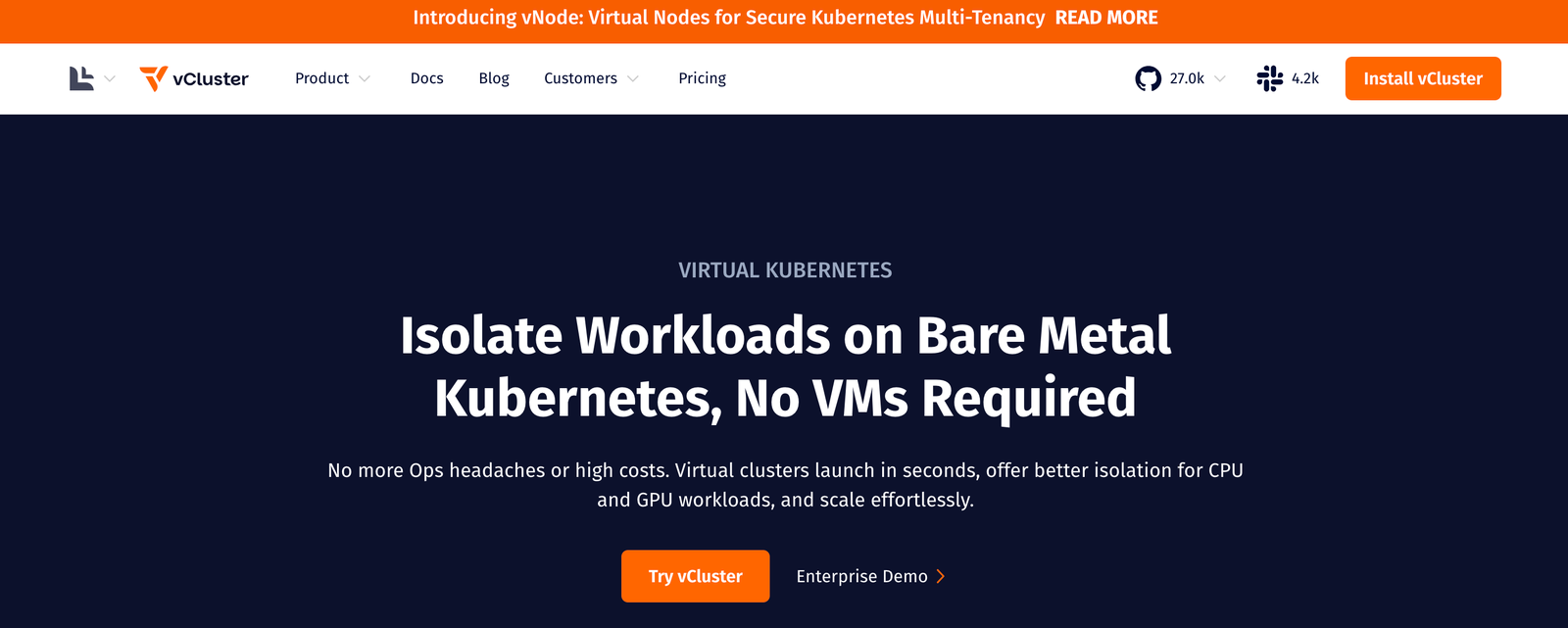
vCluster spins up isolated Kubernetes control planes inside namespaces, enabling fast, conflict-free team environments.
vCluster creates virtual clusters that are fully functional Kubernetes control planes running inside namespace-scoped pods in a host cluster. This enables powerful collaboration patterns that were previously impossible.
vCluster is especially useful when you need isolated environments for each team member or project without provisioning entire separate clusters. It keeps teams in sync by providing consistent, isolated environments that don’t step on each other’s toes.
What it does
vCluster lets you create lightweight Kubernetes clusters as namespaces inside a host cluster. These virtual clusters look and behave like real clusters but use fewer resources and can be created on demand. Team members can experiment, test, and develop in isolated environments without impacting others or waiting for cluster provisioning.
What makes it different
Unlike traditional multi-tenancy approaches that rely on namespaces alone, vCluster provides true isolation with separate control planes. This means teams get their own API servers, controllers, and configuration without shared environments’ security concerns or resource conflicts.
The isolation also enables advanced testing scenarios like simulating multi-cluster architectures locally or testing cluster-scoped resources without administrative privileges on the host cluster.
What you get
- Spin up isolated Kubernetes environments in seconds.
- Eliminate “noisy neighbor” problems in shared development clusters.
- Test cluster-level resources without admin access to production.
- Reduce infrastructure costs with multiple virtual clusters on shared hardware.
- Enable CI/CD pipelines with isolated, ephemeral environments.
- Improve security by isolating tenant workloads more completely.
vCluster works well for collaborative Kubernetes development at scale. For a more focused developer environment experience, let’s look at Devcontainers.
2. Devcontainers
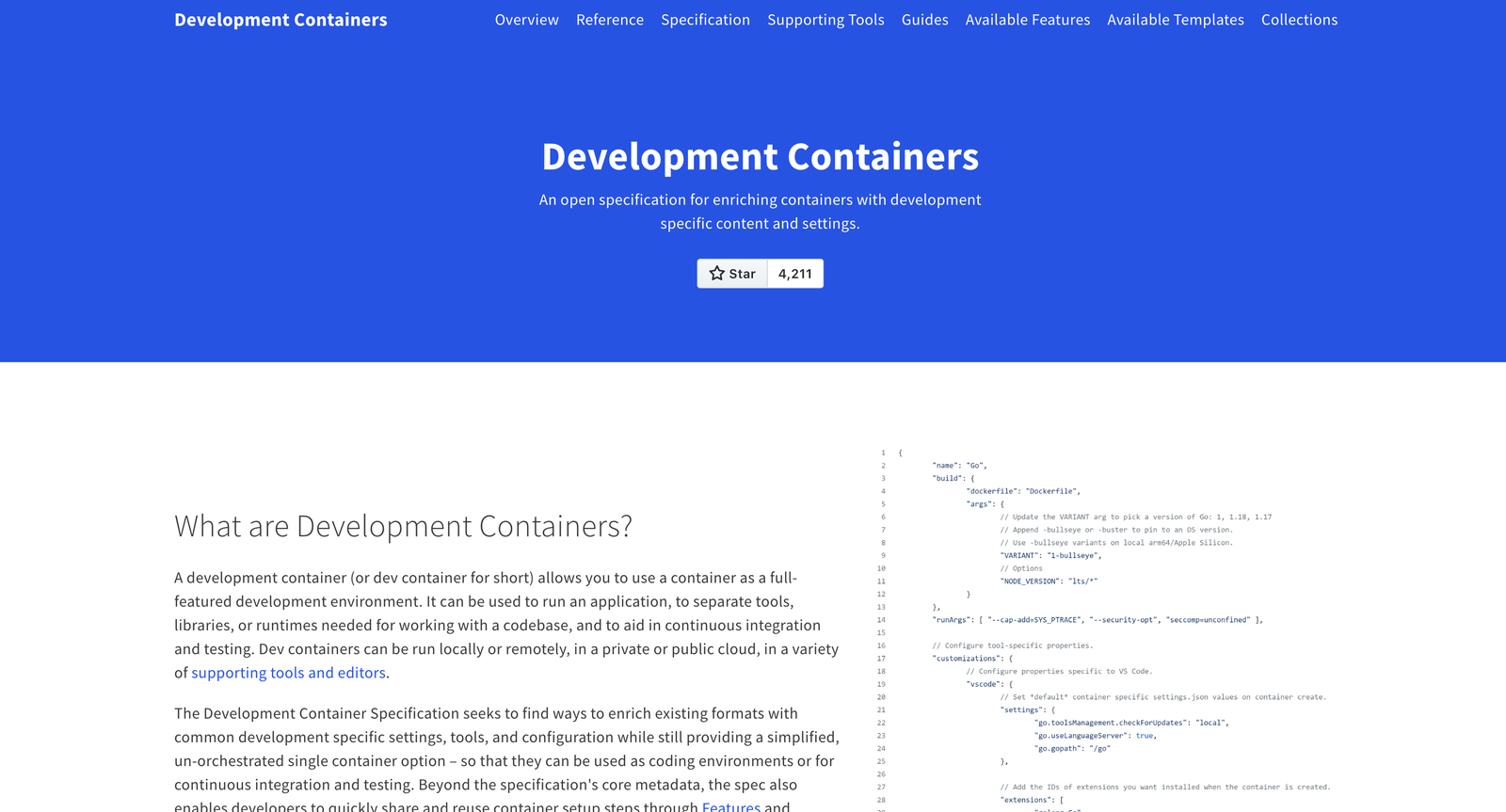
Devcontainers standardize development environments using containerized toolchains and editor integration like VS Code.
Devcontainers (or Development Containers) provide a standardized, shareable development environment that works identically for every team member. They solve the common “works on my machine” problem by encapsulating the entire toolchain, dependencies, and configuration in a containerized environment that opens directly in your editor.
Developers rely on Devcontainers when we need consistent development environments that minimize onboarding time and eliminate subtle team-wide environment differences.
What it does
Devcontainers define the entire development environment in code, from runtime dependencies to editor extensions. When a developer opens the project, their IDE (like VS Code or any supporting editor) automatically builds and connects to the container, providing the same tools, libraries, and environment everyone else uses.
What makes it different
Where traditional container approaches focus on application deployment, Devcontainers concentrate on the development experience. They integrate directly with your editor, mount your source code for real-time changes, and configure your IDE tools and extensions.
This approach brings the best of containerization to the development process itself. The environment definition lives with your code, ensuring consistency across machines and eliminating the need for complex setup documentation.
What you get
- Consistent development environments for every team member.
- Dramatically reduced onboarding time for new developers.
- “Works here works everywhere,” reliability between team members.
- Editor integration with pre-configured tools and extensions.
- Version-controlled environment definitions that evolve with your project.
- Separation between development tools and local machine configuration.
- Works both online (GitHub Codespaces) and offline (local containers).
To help you decide which fits your workflow better, here’s a side-by-side comparison of vCluster and Devcontainers.
| Feature | vCluster | Devcontainers |
|---|---|---|
| Kubernetes environment isolation | ✅ | ❌ |
| Consistent development toolchain | 🔶 | ✅ |
| IDE/editor integration | ❌ | ✅ |
| Version-controlled environment definitions | ✅ | ✅ |
| Multi-tenant collaboration | ✅ | 🔶 |
| Local and remote operation | ✅ | ✅ |
| Low resource overhead | 🔶 | ✅ |
| Cluster-scoped resources testing | ✅ | ❌ |
Note: In the comparison tables, ✅ indicates full support, ❌ indicates no support, and 🔶 represents partial or limited support for a feature.
Best DevX Tools to Achieve Production-like Local Workflows
Tools in this category help you connect your code to live infrastructure from your laptop, so you can test, debug, and build with complete context, without waiting on CI or staging.
3. mirrord
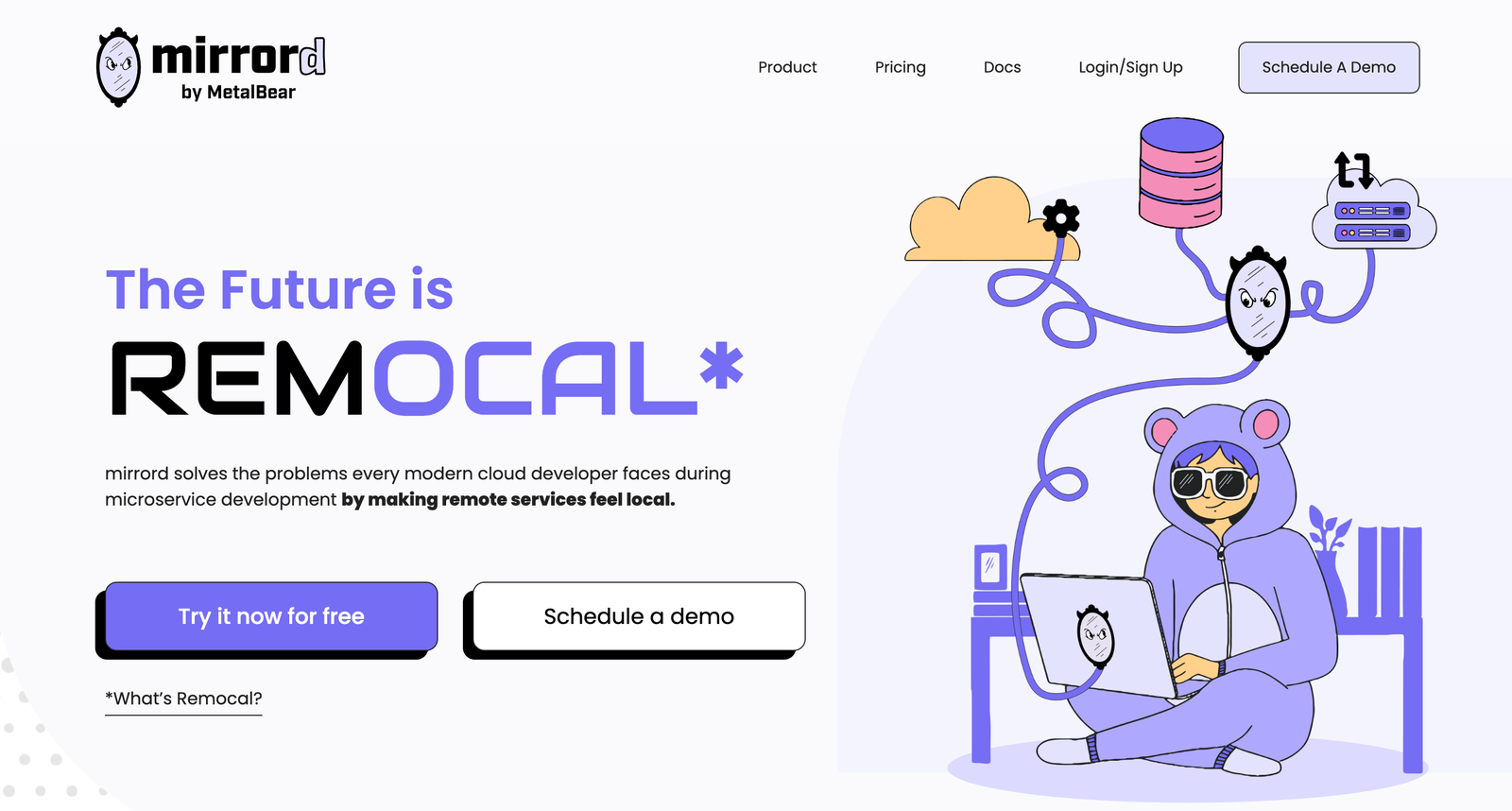
mirrord connects your local process to a live Kubernetes pod for real-time debugging without redeploying.
You’re reading this on the MetalBear blog, so let’s be upfront. We built mirrord and use it daily, and we’ve seen how much faster development becomes when local workflows reflect what’s running in production.
mirrord was built to solve the common DevX problem of writing code locally, but needing it to be tested in a disconnected staging environment. It fixes that by letting your local process inherit the environment of a pod inside your Kubernetes cluster. It connects your code to real services like databases, queues, and internal APIs without requiring a deployment.
This approach is part of a remocal workflow, where local development connects directly to remote infrastructure. It helps you build with production-level confidence while staying in your local tools.
What it does
mirrord lets you run your app from your terminal or IDE while it behaves like it’s running inside the cluster. Your process picks up environment variables, secrets, and network access from the target pod. You keep working locally, but with full access to cloud infrastructure.
What makes it different
mirrord works at the process level, not the machine level. You don’t need to route all your traffic through a VPN or tunnel. Only the process you launch is connected to the cluster. This keeps things lightweight, isolated, and easier to manage.
With mirrord for Teams, developers can independently run sessions against the same cluster without conflicts. The mirrord Operator manages access control and pod-level isolation using native Kubernetes RBAC. The mirrord Operator creates the mirrord agent, shifting the need for privileged pod creation away from developers.
What you get
- Run your app locally while interacting with live infrastructure.
- Avoid staging redeploys and shorten your feedback loop.
- Use your editor, terminal, or CI with the same underlying setup.
- Share a cluster across teammates using isolated sessions.
- Secure access with Kubernetes-native RBAC.
If your team is building for Kubernetes and you want to adopt remocal development without sacrificing speed or safety, mirrord is where we’d start. Let’s look at another tool that shares a similar goal but takes a different route.
4. Tilt
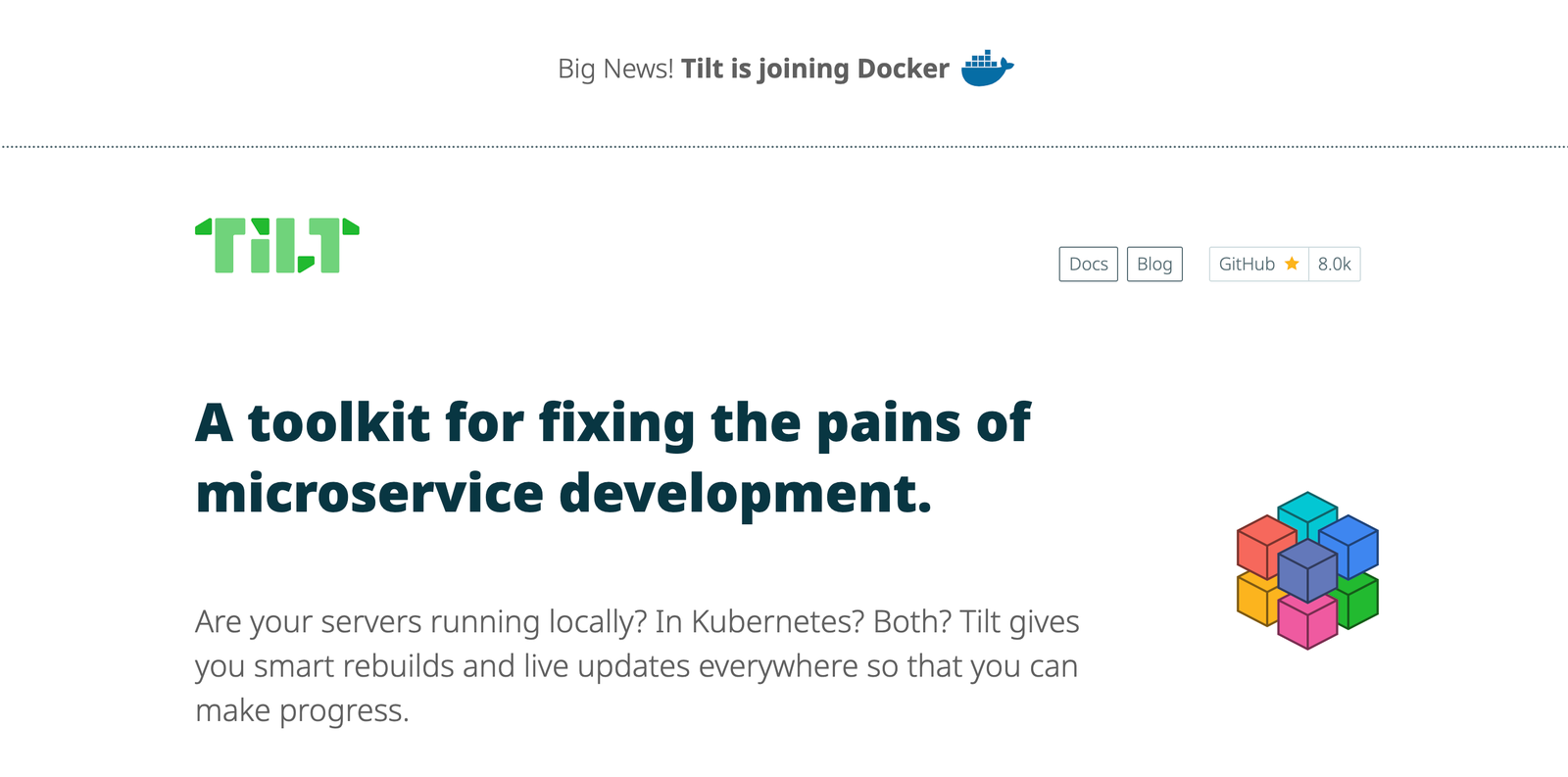
Tilt automates rebuild and redeploy cycles with a unified dashboard for monitoring all services during development.
Tilt is a solid choice if you want to automate build, deployment, and live-update cycles for your local K8s development. Tilt is not constrained to Kubernetes only and can be used in many things related to microservice development. It helps to solve one of the main struggles of dev teams: the constant rebuild-deploy-test cycle that slows delivery.
If you’ve ever found yourself manually rebuilding containers, redeploying services, and refreshing logs, Tilt eliminates those pain points with intelligent automation and real-time updates.
What it does
Tilt watches your file system for changes, automatically rebuilds relevant containers, and updates your Kubernetes resources. It creates a development environment that reacts to your changes, providing quick feedback without manual intervention. With its declarative Tiltfile configuration, you can specify how to build images, deploy resources, and set up live updates reproducibly. It also gives you a unified dashboard to monitor all your microservices simultaneously.
What makes it different
Where other tools focus on connecting to infrastructure or simulating environments, Tilt optimizes the development workflow itself. It’s designed to speed up development for teams working with multiple services by reducing wait times and providing clear error feedback.
With Tilt Extensions, teams can share reusable deployment configurations, making onboarding faster and standardizing project workflows.
What you get
- Live updates to running K8s services without complete rebuilds.
- Scriptable Tiltfile instead of static config files.
- Unified visibility into all service logs and errors in one dashboard.
- Intelligent dependency tracking that only rebuilds what changed.
- Simplified microservice development across local and cloud environments.
- Shareable build environments that stay consistent across your team.
To help you evaluate which tool fits your workflow better, here’s a quick comparison of mirrord and Tilt across key features and outcomes:
| Feature | mirrord | Tilt |
|---|---|---|
| Connect local app to real Kubernetes services | ✅ | 🔶 |
| Access cloud resources (APIs, DBs, queues) | ✅ | 🔶 |
| Automatic rebuilds and deploys on code change | ❌ | ✅ |
| Process-level traffic interception | ✅ | ❌ |
| Environment variable and secret inheritance | ✅ | 🔶 |
| Kubernetes-native RBAC integration | ✅ | ✅ |
| Low setup overhead | ✅ | 🔶 |
Note: In the comparison tables, ✅ indicates full support, ❌ indicates no support, and 🔶 represents partial or limited support for a feature.
Best DevX Tools for Environment Setup and Config
Inconsistent setups and config drift create bugs that only show up after deployment. These tools turn environments into code and make behavior predictable from the start.
5. Crossplane
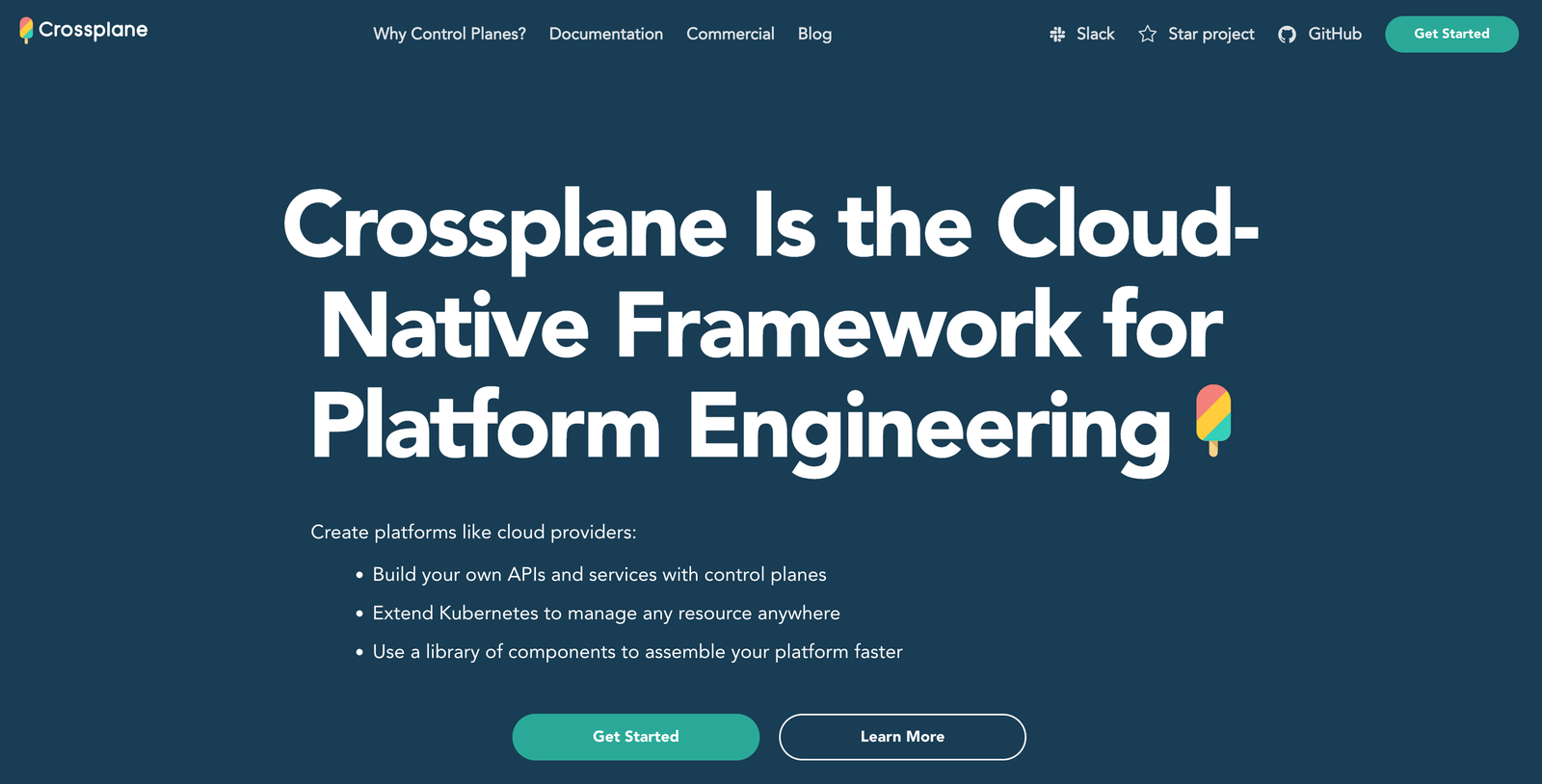
Crossplane provisions cloud resources across providers using Kubernetes-native infrastructure as code.
Crossplane is a CNCF project that brings cloud infrastructure management to Kubernetes. It lets you define and provision cloud resources using Kubernetes-native abstractions and APIs. Instead of learning multiple provider-specific tools, you define infrastructure in a consistent, portable way.
DevOps teams rely on Crossplane for infrastructure management that works across clouds with consistent APIs and workflows. It clarifies resource management and helps avoid fragmentation between different cloud providers.
What it does
With Crossplane, you define infrastructure resources (like databases, message queues, or compute instances) as Kubernetes custom resources. You can provision resources across AWS, GCP, Azure, and other providers using the same Kubernetes-native approach you use for application workloads.
What makes it different
Crossplane manages infrastructure through the Kubernetes API, making infrastructure provisioning and application deployment part of the same workflow. This unified approach eliminates the context switching between different tools and the fragmentation of infrastructure definitions across multiple systems.
It also enables platform teams to create higher-level abstractions that hide implementation details, allowing application teams to self-service infrastructure without deep provider knowledge.
What you get
- Define infrastructure in a cloud-agnostic, Kubernetes-native way.
- Consistent API for provisioning resources across different providers.
- Create abstractions that simplify infrastructure for app teams.
- Manage infrastructure and applications with the same tools and workflows.
- Enable self-service infrastructure without exposing provider details.
- Track infrastructure changes with the same CI/CD and GitOps practices as your apps.
- Simplify multi-cloud and hybrid-cloud scenarios with uniform control.
Now let’s look at KubeVela, which brings a platform-agnostic approach to application delivery.
6. KubeVela
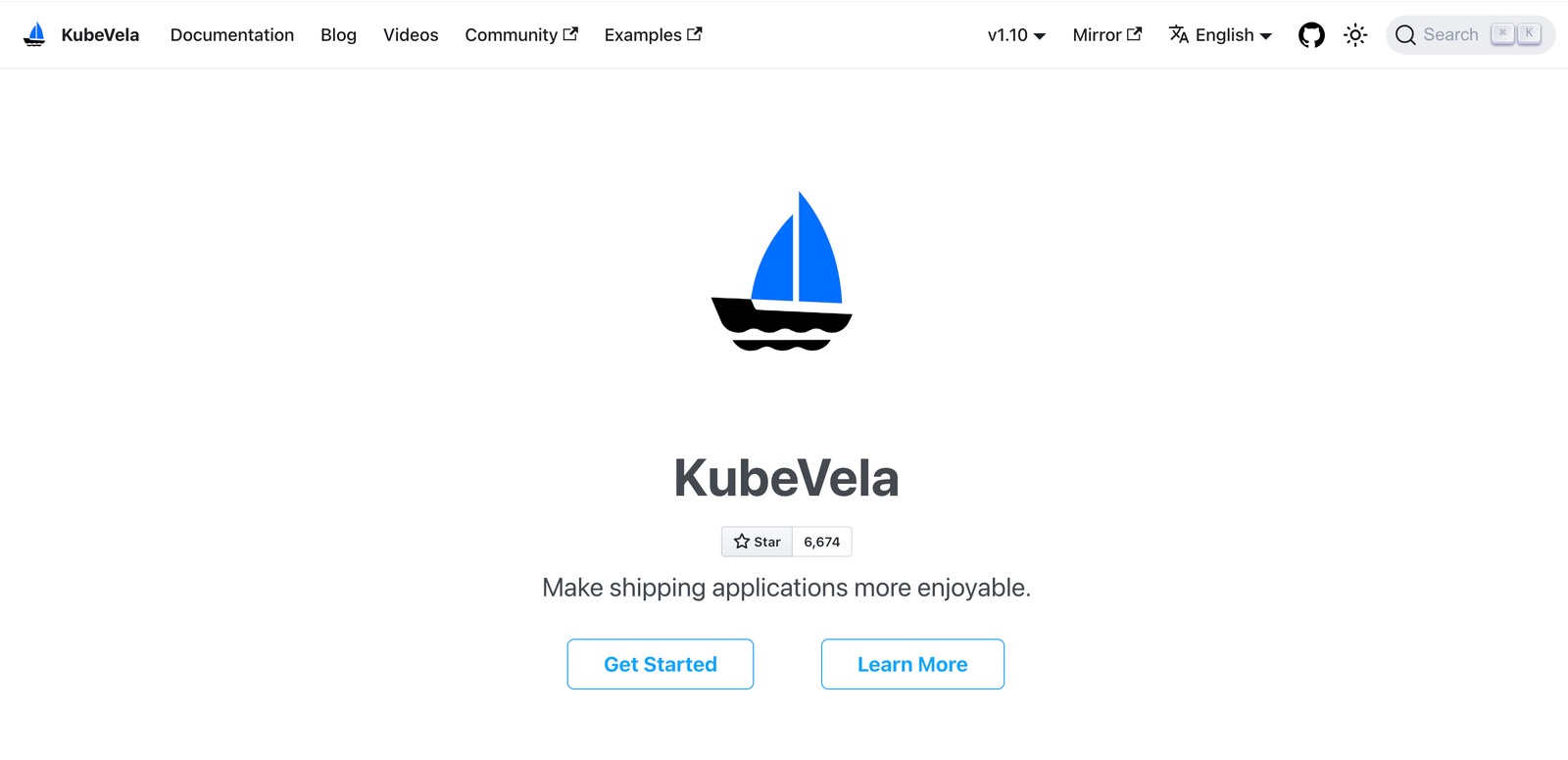
KubeVela enables platform-agnostic application delivery through reusable, declarative deployment patterns.
KubeVela is a CNCF project that focuses on making application delivery consistent and extensible across different environments. It provides an application-centric delivery platform that separates application definition from deployment.
Dev teams reach for KubeVela when they need to standardize deployment patterns across teams without limiting their flexibility. It helps eliminate complexity by creating reusable, extensible components that make deployments consistent.
What it does
KubeVela introduces an abstraction layer for application delivery. You define application components and deployment workflows once, then target different environments with the same definitions. It handles the translation to environment-specific resources and workflows.
What makes it different
Where many delivery tools focus on specific environments or workflows, KubeVela creates a platform that can be extended to fit any delivery pattern. Platform teams can create reusable components and workflows, while application teams get a consistent interface that adapts to their needs.
It’s also designed with extensibility in mind, allowing you to define capabilities, components, and traits to add functionality specific to your organization’s needs.
What you get
- Define applications once, and deploy them consistently across environments.
- Create platform-agnostic deployment patterns that work anywhere.
- Enable self-service application operations with guardrails.
- Build a delivery platform tailored to your organization’s needs.
- Standardize best practices without limiting team flexibility.
- Integrate with existing CD systems through extensible workflows.
- Scale to hundreds of applications with consistent management patterns.
Let’s compare how these tools stack up for infrastructure and environment consistency.
| Feature | Crossplane | KubeVela |
|---|---|---|
| Define infrastructure as code | ✅ | 🔶 (via integrations) |
| Multi-cloud/provider support | ✅ | ✅ |
| Application delivery workflows | 🔶 | ✅ |
| Self-service developer portal | 🔶 | ✅ |
| Kubernetes-native resource management | ✅ | ✅ |
| Extensible abstractions | ✅ | ✅ |
| Environment-specific configurations | 🔶 | ✅ |
| Cloud resource provisioning | ✅ | 🔶 |
Note: In the comparison tables, ✅ indicates full support, ❌ indicates no support, and 🔶 represents partial or limited support for a feature.
Wrapping Up
Chaining the right tools brings compound DevX benefits, especially in a world where inner dev cycles are increasingly slowed down by staging delays, CI queues, and complex test environments.
By starting with mirrord, you shift testing left, running local code against real infra context without needing to deploy. This alone cuts feedback loops from minutes to seconds.
Then with Devcontainers, vCluster, and Crossplane, you add reproducibility, isolation, and scalable infra-as-code. Together, they let teams spin up consistent environments without spinning up new clusters or burning budget.
Recent studies show that non-production environments, which includes dev, test, staging, and demo, account for ~27% of a company’s cloud infrastructure costs (Flexera, State of the Cloud). In complex SaaS orgs, staging alone can consume 16–18% of spend.
By reducing test cycle time and avoiding full environment duplication per PR, this toolchain helps you move faster with less, while staying closer to production from the start.
Try mirrord today and see the difference: Download our CLI with Homebrew (macOS or Linux):
brew install mirrord
Or install it with a single command using the install script:
curl -fsSL https://raw.githubusercontent.com/metalbear-co/mirrord/main/scripts/install.sh | bash
And sign up for a free mirrord for Teams account to get started in under 5 minutes. Ship your next feature without waiting for staging environments. 🙌

